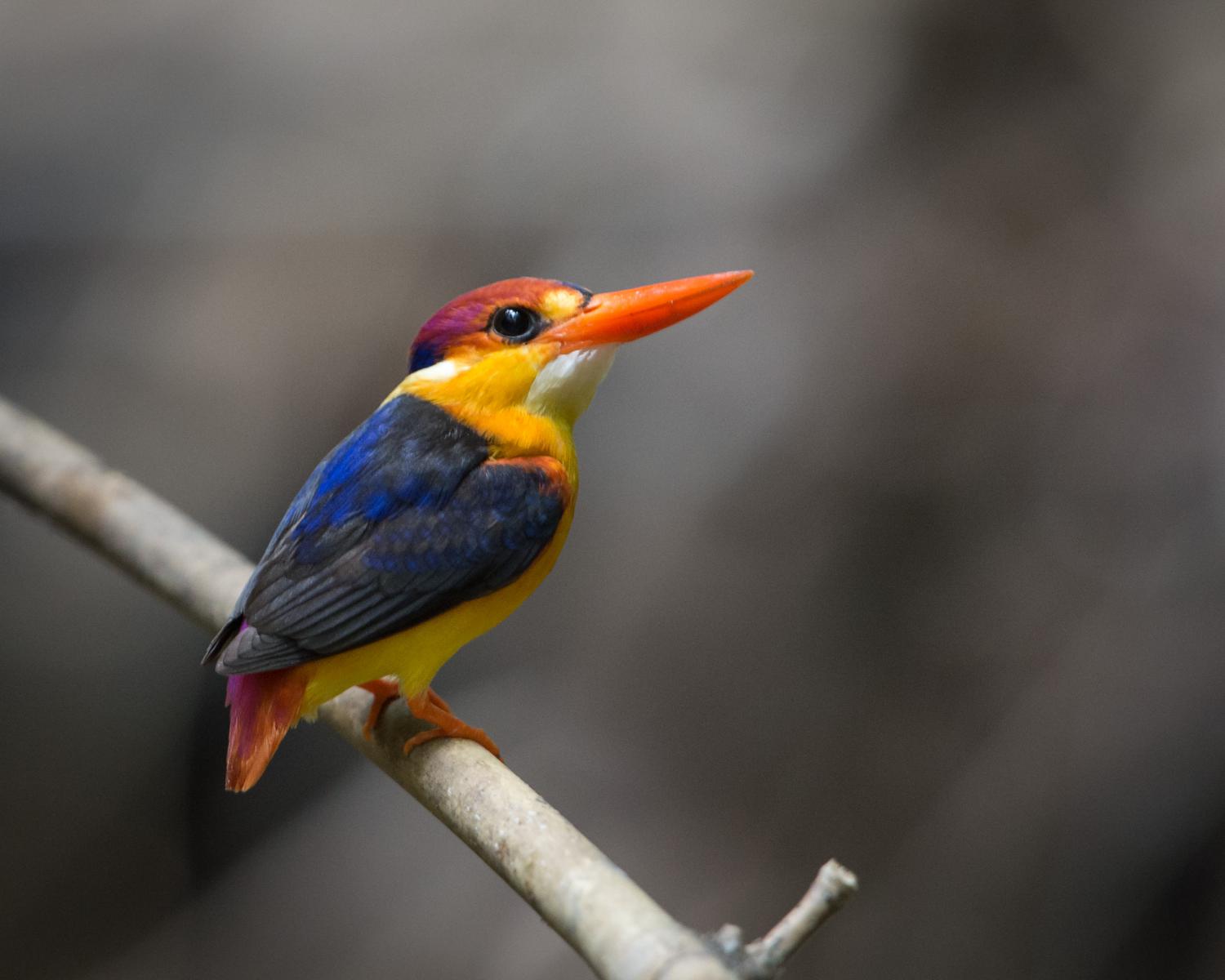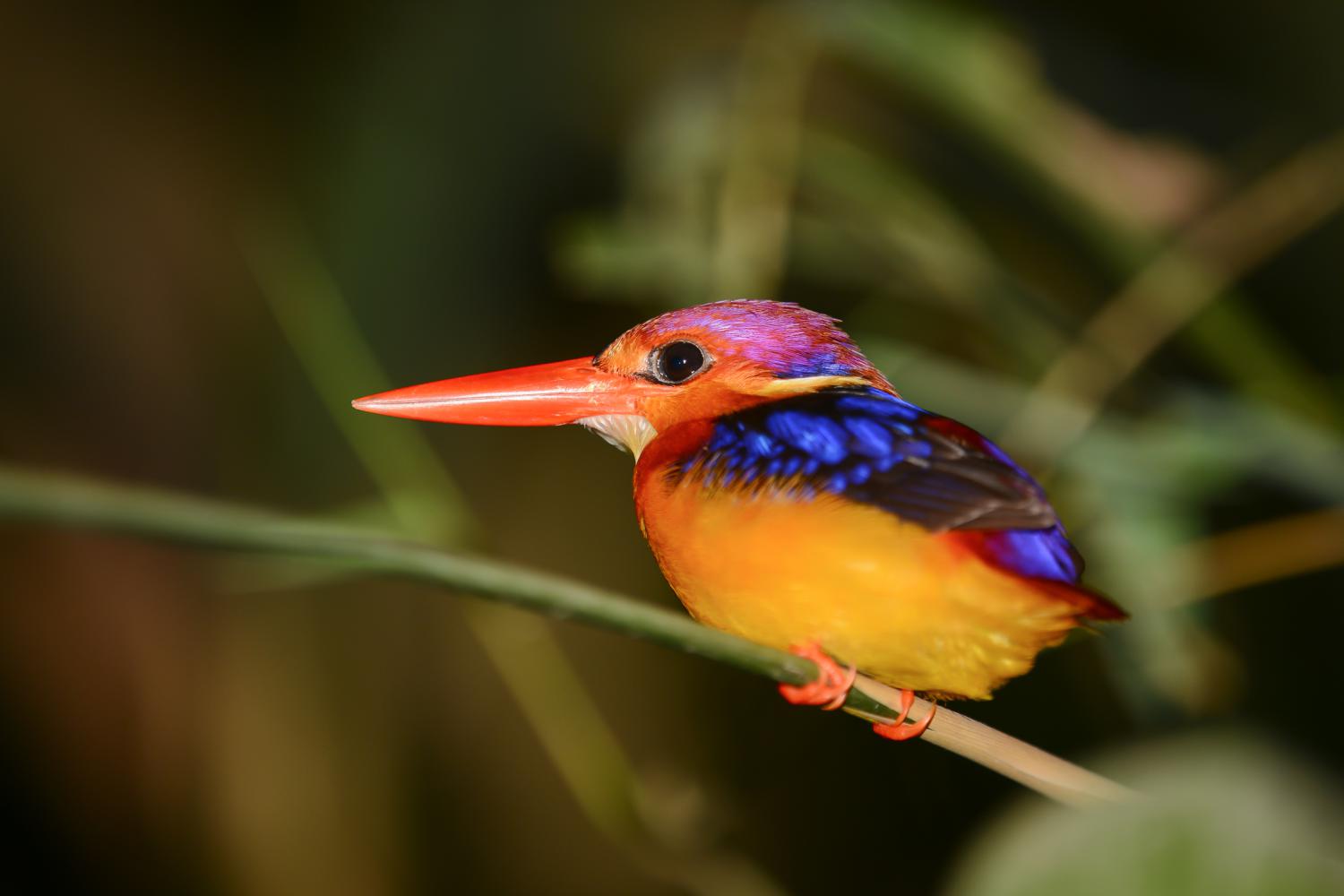Species of Thailand
Oriental dwarf kingfisher
Ceyx erithaca
Carolus Linnaeus, 1758
In Thai: นกกะเต็นน้อยสามนิ้ว
The Oriental dwarf kingfisher (Ceyx erithaca), also known as the black-backed kingfisher or three-toed kingfisher, is a species of bird in the family Alcedinidae. A widespread resident of lowland forest, it is endemic across much of the Indian subcontinent and Southeast Asia. It is found in Bangladesh, Bhutan, Brunei, Cambodia, India, Indonesia, Laos, Malaysia, Myanmar, Singapore, Sri Lanka, Thailand and Viet Nam.
This is a small, red and yellow kingfisher, averaging 13 cm in length, yellow underparts with glowing bluish-black upperparts.
Habitat
The preferred habitat is small streams in densely shaded forests. In the Konkan region of southwest India.
Breeding
It begins to breed with the onset of the southwest monsoon in June. The nest is a horizontal tunnel up to a metre in length. The clutch of four or five eggs hatches in 17 days with both the male and female incubating. The birds fledge after 20 days and a second brood may be raised if the first fails. The young are fed with geckos, skinks, crabs, snails, frogs, crickets, and dragonflies. The rufous-backed kingfisher is sometimes considered a subspecies.
This article uses material from Wikipedia released under the Creative Commons Attribution-Share-Alike Licence 3.0. Eventual photos shown in this page may or may not be from Wikipedia, please see the license details for photos in photo by-lines.
Category / Seasonal Status
BCST Category: Recorded in an apparently wild state within the last 50 years
BCST Seasonal statuses:
- Resident or presumed resident
- Non-breeding visitor
Scientific classification
- Kingdom
- Animalia
- Phylum
- Chordata
- Class
- Aves
- Order
- Coraciiformes
- Family
- Alcedinidae
- Genus
- Ceyx
- Species
- Ceyx erithaca
Common names
- Thai: นกกะเต็นน้อยสามนิ้ว
Synonyms
- Ceyx rufidorsa, Hugh Edwin Strickland (1847)
- Ceyx erithacus, Carolus Linnaeus (1758)
- Ceyx microsoma
- Ceyx tridactylus
Conservation status

Least Concern (IUCN3.1)
Photos
Please help us review the bird photos if wrong ones are used. We can be reached via our contact us page.
Range Map

- Bang Lang National Park
- Bangkok Province
- Chiang Dao Wildlife Sanctuary
- Doi Lo District, Chiang Mai
- Hala-Bala Wildlife Sanctuary
- Huai Kha Khaeng Wildlife Sanctuary
- Kaeng Krachan District, Phetchaburi
- Kaeng Krachan National Park
- Khao Banthat Wildlife Sanctuary
- Khao Luang National Park
- Khao Phra - Bang Khram Wildlife Sanctuary
- Khao Sam Roi Yot National Park
- Khao Sok National Park
- Khao Yai National Park
- Klaeng District, Rayong
- Kui Buri National Park
- Mueang Chiang Mai District, Chiang Mai
- Mueang Khon Kaen District, Khon Kaen
- Mueang Krabi District, Krabi
- Mueang Maha Sarakham District, Maha Sarakham
- Nong Plak Phra Ya – Khao Raya Bangsa Non-Hunting
- Phu Suan Sai National Park
- Samut Prakan Province
- San Kala Khiri National Park
- Sri Phang-nga National Park
- Takua Pa District, Phang Nga
- Thai Mueang District, Phang Nga


